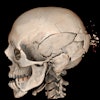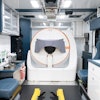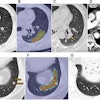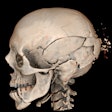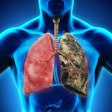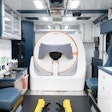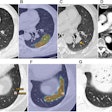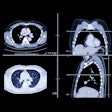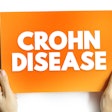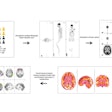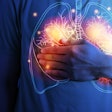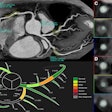Nociceptive responses to contrast CT imaging such as intense warmth, urinary urgency, a metallic taste, dry mouth, and mild discomfort or pain aren't necessarily indicators of adverse contrast reactions, according to a review published in the Journal of Advanced Health Care.
Rapid hemodynamic and osmotic changes caused by iodinated contrast media (ICM) infusion can activate vascular nociceptors and generate these kinds of sensations, but they can be mitigated by patient-centered care, noted sole author Giuseppe Scappatura, a radiologic technologist at the Bianchi-Melacrino-Morelli Hospital Trust of Reggio Calabria in Italy. The paper was published March 5.
"The [review] findings suggest that optimizing patient management protocols by addressing both the physiological and psychological components of the [patient's] response can lead to improved patient compliance and higher-quality imaging outcomes," Scappatura wrote.
Scappatura was inspired to conduct his review by observations from his daily clinical practice, noting that "[these recurring responses] prompted me to investigate the underlying nociceptive neurophysiological mechanisms responsible … with the aim of reclassifying them as physiological phenomena rather than adverse reactions," he told AuntMinnie.com. (Nociception is the sensory nervous system's way of detecting and processing potentially damaging stimuli such as heat, cold, mechanical force, or chemicals, and often results in the perception of pain.)
"While these sensations are not indicative of pathological pain, they can negatively affect patient compliance and, in some cases, the quality of CT images due to motion artifacts or altered vascular timing," he wrote in the review. "Understanding the neurophysiological basis of these responses is crucial for distinguishing benign nociceptive phenomena from true adverse reactions and for implementing appropriate patient management strategies."
Scappatura examined "a substantial body of peer-reviewed literature," he told AuntMinnie.com: specifically, studies that analyzed the mechanisms of nociception during ICM infusion and focused on the hemodynamic and osmotic changes induced by the contrast, the activation of vascular nociceptors, and the subsequent neurophysiological pathways. He selected articles that examined the "processes of transduction, transmission, modulation, and perception of nociceptive signals," as well as those that explored the patient's sensory experience during contrast injection.
In addition, he tracked data regarding the "activation of A-delta and C nerve fibers, the modulation of nociceptive signals by psychological factors such as anxiety and fear, and the impact of these processes on image quality and patient comfort." (A-delta and C nerve fibers are two types that conduct pain perception, with A-delta fibers communicating sharp, localized pain and C fibers communicating dull, burning, and longer-lasting pain.)
The overall finding of the review was that these nociceptive signals are "transient and generally benign" rather than adverse reactions to contrast and can be mitigated by strategies such as pre-procedural communication and personalized interventions, Scappatura said.
"[There's a] significant influence of psychological factors such as anxiety, stress, and anticipatory fear in modulating the transmission and processing of nociceptive signals during ICM infusion," he told AuntMinnie.com. "Even though the potential stimulus remains constant, variations in central perceptual thresholds, driven by neurochemical mechanisms and the activity of limbic circuits, result in heterogeneous sensory responses among patients. This complex interplay between physiological and emotional processes underscores the importance of adopting integrative strategies -- such as accurate preprocedural communication and personalized interventions -- to attenuate nociceptive activation and ultimately enhance both patient comfort and diagnostic quality."
The complete study can be found here.

